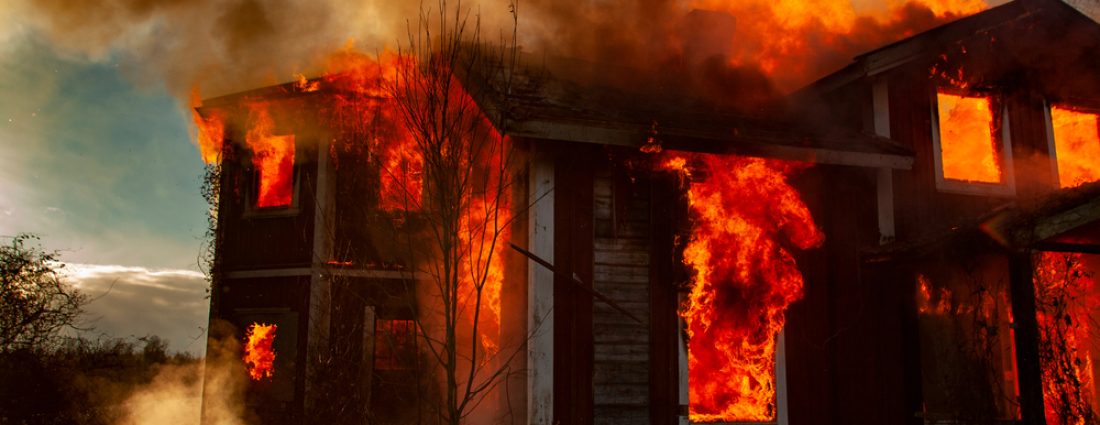Every year, thousands of fires happen in the United States. These fires leave behind a lot of damage, not just the burned buildings. They also cause harm to personal items and create secondary damage from smoke, soot, and water.
It’s important to know how much damage a fire has caused. This includes the damage from the fire itself and the damage from fighting it, like water and smoke damage.
Key Takeaways
- Fire damage includes both primary and secondary destruction.
- Secondary damage can result from smoke, soot, and water used in firefighting.
- Understanding the full extent of fire damage is key for recovery.
- Recovery efforts involve assessing and addressing both types of damage.
- Professional assessment is often needed to figure out the extent of fire damage.
Understanding Fire Damage Types and Categories
It’s important to know the different types and categories of fire damage. This knowledge helps in assessing and restoring damage effectively. Each type of damage needs a specific approach for fixing.
Fire damage includes flame damage, smoke damage, and other related issues. Flame damage is caused directly by the fire. Smoke damage harms structures and belongings with smoke.
Classification of Fire Damage
Classifying fire damage is key to figuring out how much damage there is. It helps in planning the right restoration steps. Fire damage is sorted into categories based on materials and damage severity.
Flame damage is divided into classes (A to F) based on materials. For example:
- Class A fires involve ordinary combustible materials like wood, paper, and cloth.
- Class B fires involve flammable liquids or gases.
- Class C fires involve electrical equipment.
- Class D fires involve combustible metals.
- Class F fires involve cooking oils or greases.
Knowing these classifications is vital for assessing fire damage. It helps in choosing the right restoration methods and safety steps.
Smoke damage is another big part of fire damage. It needs special cleaning and restoration to remove soot and smoke from surfaces and materials.
In summary, understanding and classifying fire damage types are essential for effective assessment and restoration. By sorting damage based on materials and severity, experts can create focused restoration plans.
What is Considered Fire Damage in Insurance and Assessment
Knowing about fire damage in insurance is key for property owners. Fire damage is usually covered by insurance, mainly if it’s accidental. To win a claim, you must know what’s covered and how to file.
After a fire, the insurance checks the damage. They look at the building’s structure and personal items. Adjusters are important here, deciding if the claim is valid and what’s covered.
Key Factors in Fire Damage Insurance Claims
- Policy Details: Knowing your policy well is essential. It tells you what’s covered, limits, and what’s not.
- Documentation: You need good records of the damage. This includes photos, videos, and a list of what’s damaged.
- Timeliness: You must file your claim quickly. Policies have time limits for this.
Filing a fire damage claim can be tricky. You should check your policy often. Also, keep an updated list of your belongings to help with the claim.
In short, knowing about fire damage in insurance is vital. By understanding the key points and the need for detailed documentation, you can handle a fire’s aftermath better.
Fire Damage Restoration and Cleanup
Fire damage restoration is a series of steps to fix a property after a fire. It’s key to make the property safe and livable again.
The Importance of Professional Services
Getting help from professional fire damage restoration services is vital. They use special tools and methods to fix different kinds of damage. This includes damage to the structure, smoke, and water damage.
Techniques for Different Types of Damage
There are different ways to fix different types of damage. For smoke damage, special cleaners and tools are needed to get rid of soot and smells. Water damage, caused by firefighting, needs drying and dehumidifying to stop mold.
Steps for Property Owners
Property owners can do a few things to lessen damage. They should:
- Secure the property to avoid more damage or theft
- Take photos of the damage for insurance
- Call a professional restoration service right away
- Follow the team’s advice for repairs and cleaning
Knowing about fire damage restoration and cleanup helps property owners. Getting professional help is a big step. It ensures the property is fixed safely and well.
Conclusion
Knowing about fire damage is key to fixing things and dealing with insurance. Fire damage comes in many forms. It’s important to figure out how bad it is to know what to do next.
Stopping fire damage means acting fast and knowing how to fix things. Good strategies can stop more damage and lower the chance of fires happening again.
By understanding fire damage and how to fix it, owners can act early. This helps reduce damage and makes fixing things more likely to succeed. Fire damage prevention is a big part of this, needing a detailed plan to avoid or lessen damage.
Rapid Recovery with Disaster Kleenup Specialists in California
From water and fire damage to mold and storm cleanup, Disaster Kleenup Specialists delivers fast, professional restoration when you need it most. Available 24/7 with expert care and free assessments. Don’t wait—call now to rebuild with confidence!

